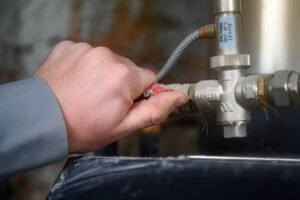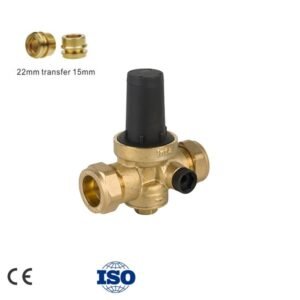When we open our taps, we expect water to flow at a manageable speed and pressure. But what controls this flow, ensuring it’s not too strong to cause damage or too weak to be ineffective? The answer lies in the water pressure regulator.
A water pressure regulator, often unseen, plays a pivotal role in our plumbing systems. It’s a type of valve that reduces the incoming water pressure from the main water line to a safer, more usable level for our homes and businesses. Without it, the high pressure could damage pipes, appliances, and fixtures, leading to leaks, bursts, and a host of plumbing issues.
Understanding how this component works can save you from a world of inconvenience and costly repairs. So, let’s dive deeper into the function, importance, and selection of water pressure regulators for your property.

Why Do We Need a Water Pressure Regulator?
- To Protect Plumbing Systems: High water pressure can strain pipes, cause leaks, and lead to premature failure of plumbing fixtures.
- To Save Water and Money: Regulating water flow can significantly reduce water wastage, contributing to environmental conservation and lowering utility bills.
- To Ensure Consistent Water Pressure: Fluctuations in water pressure are not just annoying; they can affect the efficiency of heating systems and appliances.
How Does a Water Pressure Regulator Work?
A water pressure regulator consists of a valve that automatically adjusts the flow of water to maintain a consistent output pressure, regardless of variations in the incoming water pressure. It typically includes a spring and diaphragm that compress as the water pressure increases, reducing the flow rate and vice versa.
Types of Water Pressure Regulators
- Direct-acting: The most common and straightforward design, suitable for residential and small commercial applications.
- Pilot-operated: Ideal for larger systems with varying flow rates and pressures, offering more precise control.
Installation and Maintenance Tips
- Location: Install the regulator where it can be easily accessed for maintenance, ideally just after the main shut-off valve.
- Adjustment: Most regulators come factory-set but can be adjusted according to specific needs. However, it’s best to consult a professional plumber for adjustments.
- Regular Checks: Periodic inspections are crucial to ensure the regulator functions correctly, especially in areas with significant pressure fluctuations.
Choosing the Right Water Pressure Regulator
When selecting a regulator, consider the size of your plumbing system, the typical flow rate, and the materials compatible with your water type. It’s often recommended to opt for a model with a built-in strainer to prevent debris from affecting the valve’s operation.
For specific models and further guidance, consulting with a plumbing professional or a reputable manufacturer can provide you with tailored advice and options.
Conclusion
A water pressure regulator is an unsung hero in our plumbing systems, safeguarding against the potential havoc caused by high water pressure. By understanding its role, operation, and maintenance, you can ensure the longevity and efficiency of your plumbing infrastructure, ultimately saving time, money, and resources.






